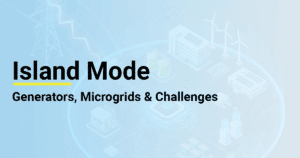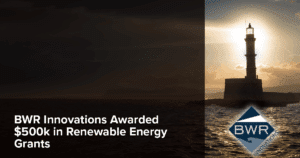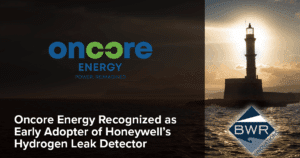Island Mode: Generator Options, Microgrids & Challenges
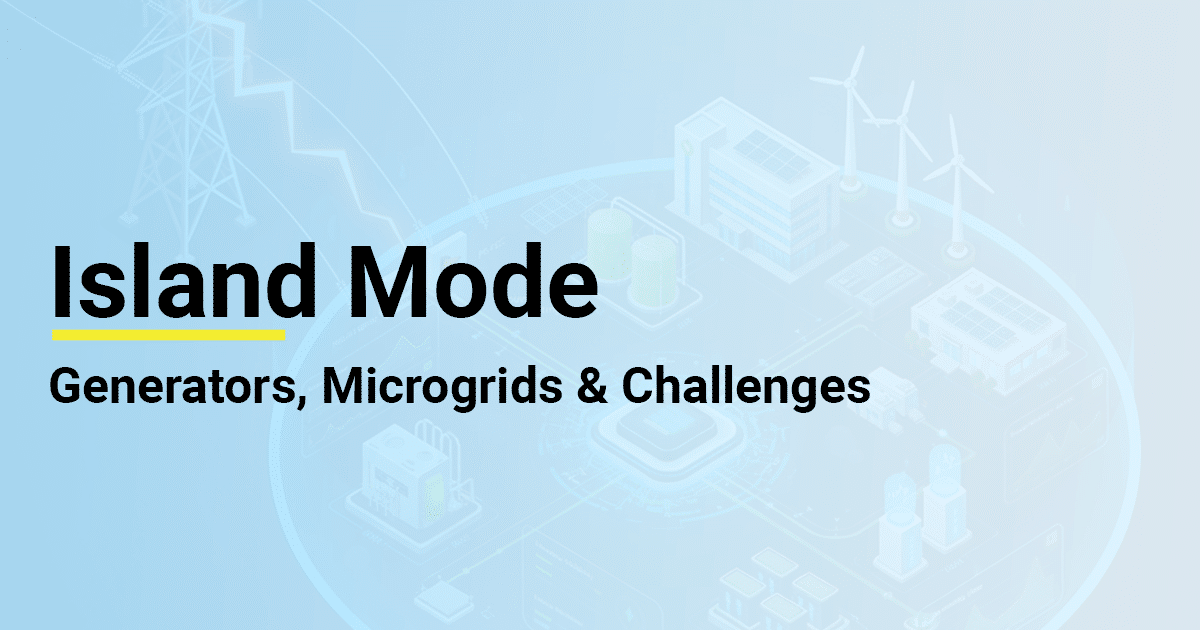
What is “island mode”?
“Island mode” is when a microgrid is disconnected from external forms of power and relies on self-generated power to power all systems within its purview. This is best explained in an example.
Let’s imagine a hospital that has diesel generators, but is connected to the main power grid. When the power goes down, the hospital is wired to automatically switch over to backup power to continue running operations. Technically, the hospital has now entered “island mode”.
What is the difference between “grid-connected mode” and “island mode”
Most microgrids have two statuses: grid-connected mode and island mode.
Grid-connected mode means the larger power grid is currently powering operations within the microgrid. This is likely through nuclear or coal, which is processed by the electrical service and then delivered via powerlines.
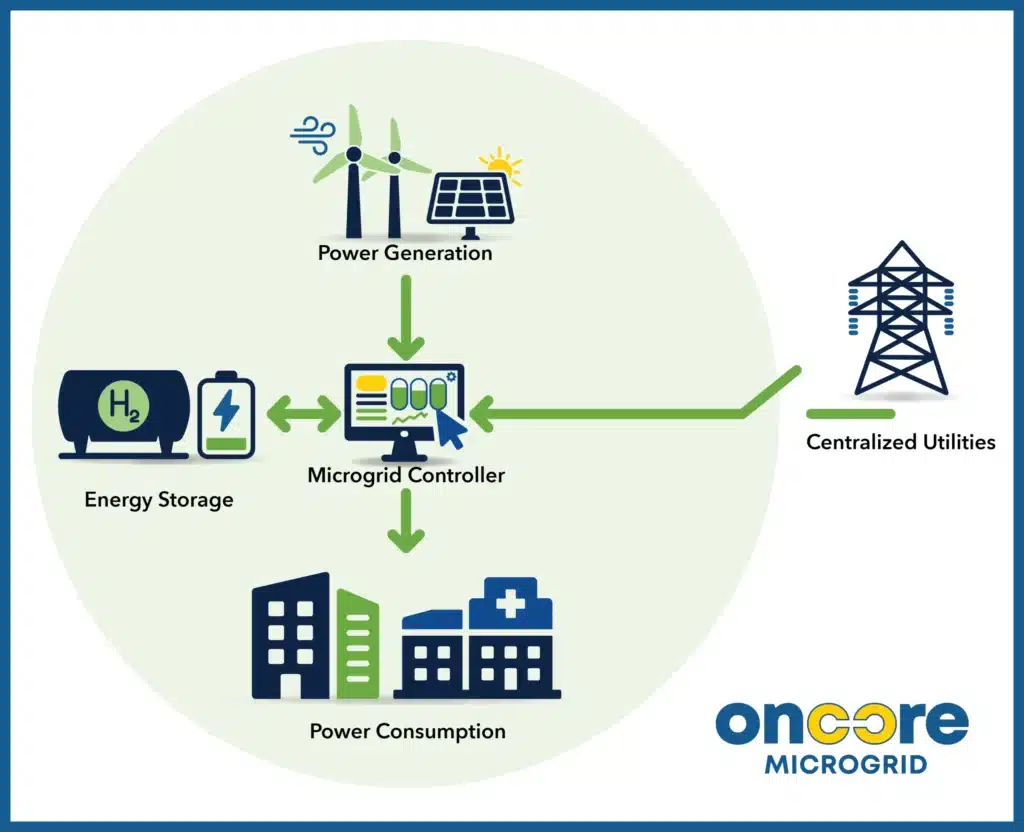
Island mode means the microgrid is powering operations independent of any larger grid. This can be with diesel, natural gas, or hydrogen.
RELATED: Solar Hydrogen Generators
How is power generated in island mode?
When a microgrid is in island mode, it relies on its native power supply to power operations. When a corporation or government sets up a microgrid, they usually have considerations for the fuel they choose.
We’ve worked on projects where we’ve built a hydrogen microgrid that operates in island mode. In a military context, if a forward operating base requires fuel, it likely cannot tap into a grid when troops are deployed in a foreign country. They rely on fuel to sustain operations. To make an ideal microgrid, the fuel must also be able to be generated on-site. This is crucial: otherwise, it’s no different than a standard generator setup.
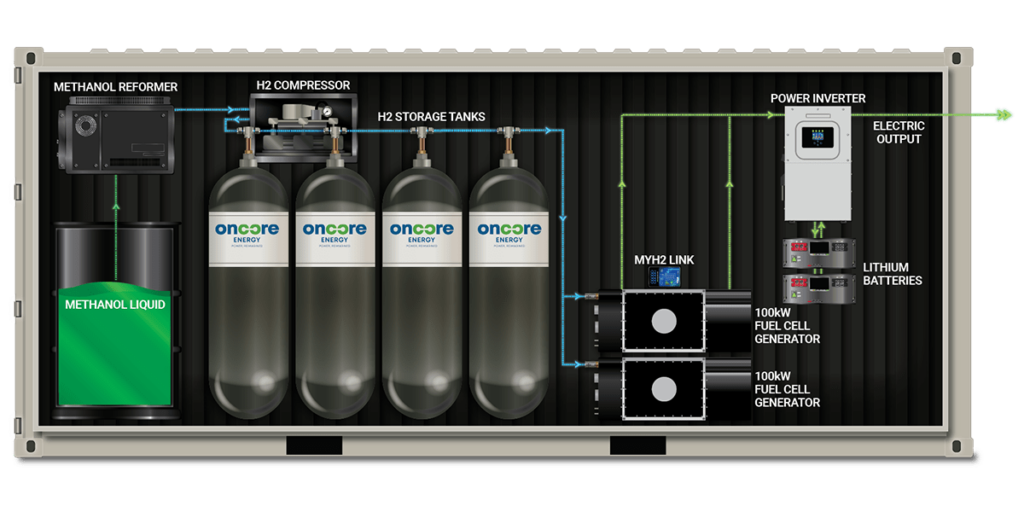
A microgrid using hydrogen can harvest additional fuel from solar panels using electrolysis. The extra power from solar can be converted to hydrogen and then stored in tanks for use in island mode.
What about unscheduled or sudden island mode?
In instances where a power system goes “off the grid” suddenly (as in the case of a natural disaster), switching to island mode must happen instantly. This is usually done using a form of a transfer switch, but the technical details are a little trickier and come with a few challenges.
Challenges and issues with operating a microgrid in Island Mode
There are three primary issues a system can run into during island mode.
Load Balancing
In a large system (like a forward operating base or hospital), the load demanded of the grid can fluctuate greatly. Generators must always match power output to the demand of loads. If they fail to do so, the system’s frequency and voltage can drop, and thus lead to a shutdown. (Very bad in critical use situations).
Transitions
In smaller-scale situations, automatic transfer switch generators detect an outage and instantly fire up the generator. On a macro scale, this becomes more complex.
Resynching
In most scenarios, a microgrid is set up to run in both island mode and grid-connected mode. When it’s time to switch back to grid-connected mode, the local system’s voltage and frequency must be synchronized with the grid before the connection can be re-established. If this doesn’t happen, it can severely damage the electrical equipment.
Power Solutions when Island Mode is Needed
Oncore Energy builds hydrogen fuel cell generators that can be installed as microgrids, especially when linked to solar power. We can produce storable hydrogen through our electrolysis process, and run all the calculations automatically with our proprietary software MyH2Link. This has allowed us to be involved with critical projects all over the world where independent microgrid power is needed to run in “island mode”.
Our engineers are hard at work continuing to develop solutions for residential, commercial, and government clients. Reach out to us if you have a problem you need to solve or if you are looking to integrate our solutions into your power needs.
More from Oncore Energy
Island Mode: Generator Options, Microgrids & Challenges
What is “island mode”? “Island mode” is when a microgrid is disconnected from external forms of power and relies on self-generated power to power all systems within its purview. This is best explained in an example. Let’s imagine a hospital that has diesel generators, but is connected to the main power grid. When the power…
BWR Innovations Awarded $500k in Renewable Energy Grants from North Dakota Industrial Commission
BISMARCK, ND (July 30, 2025) – The North Dakota Industrial Commission announced the approval of $700,000 in matching grants through its Renewable Energy Program. The funding supports two innovative projects, with an award of $500,000 going to BWR Innovations, LLC to advance its hydrogen energy project. The $500,000 grant was awarded to BWR Innovations, LLC…
Oncore Energy Recognized as “Early Adopter” of Honeywell’s Hydrogen Leak Detector
Fargo, N.D. (May 7, 2025) – Automation.com has recognized Oncore Energy and BWR Innovations as one of the early adopters of Honeywell’s Hydrogen Leak Detector (HLD). This acknowledgment highlights BWR Innovations’ proactive approach to integrating safety technology into hydrogen power solutions. The recent release from Automation.com regarding Honeywell’s new HLD sensor has garnered attention across…

